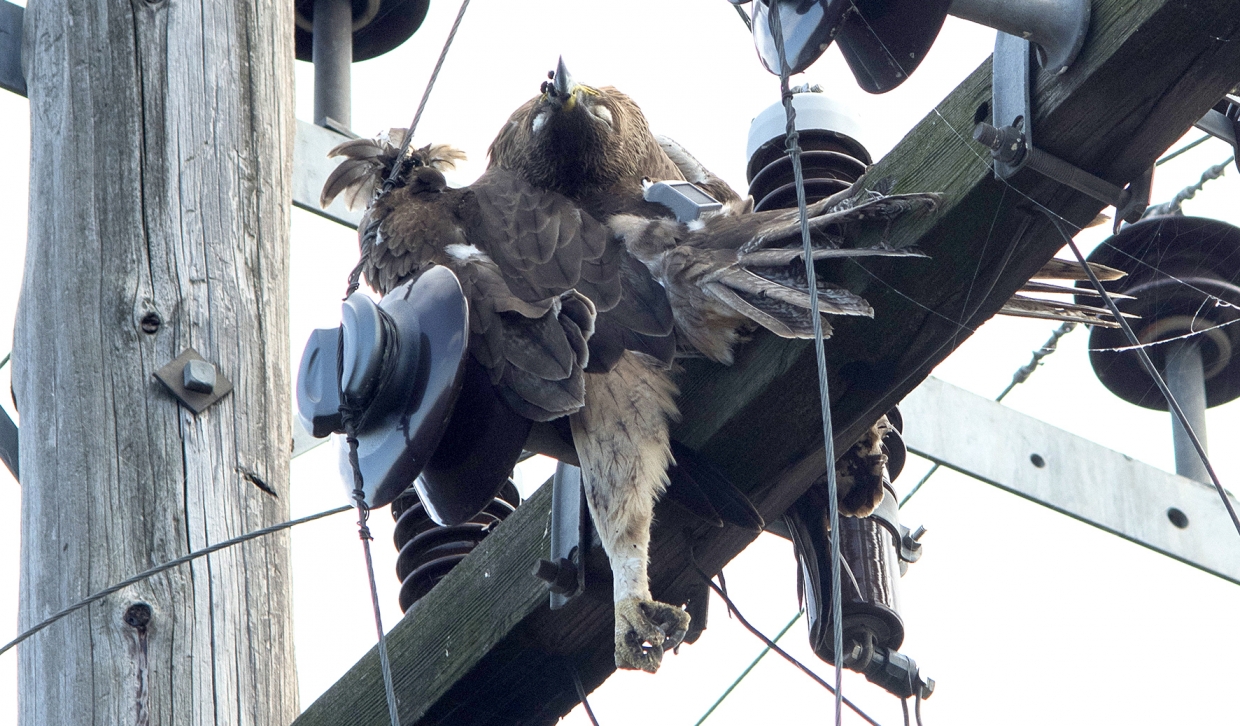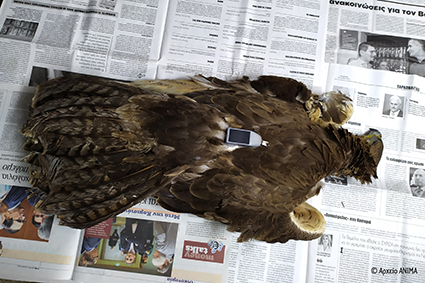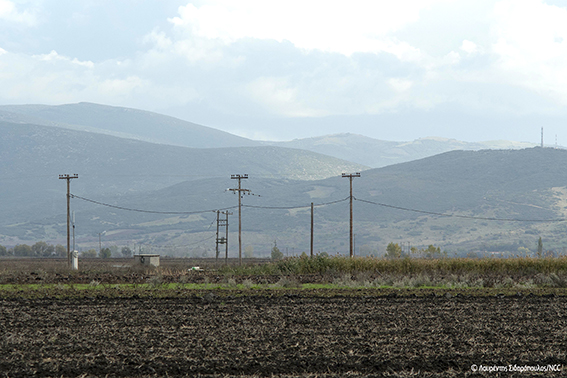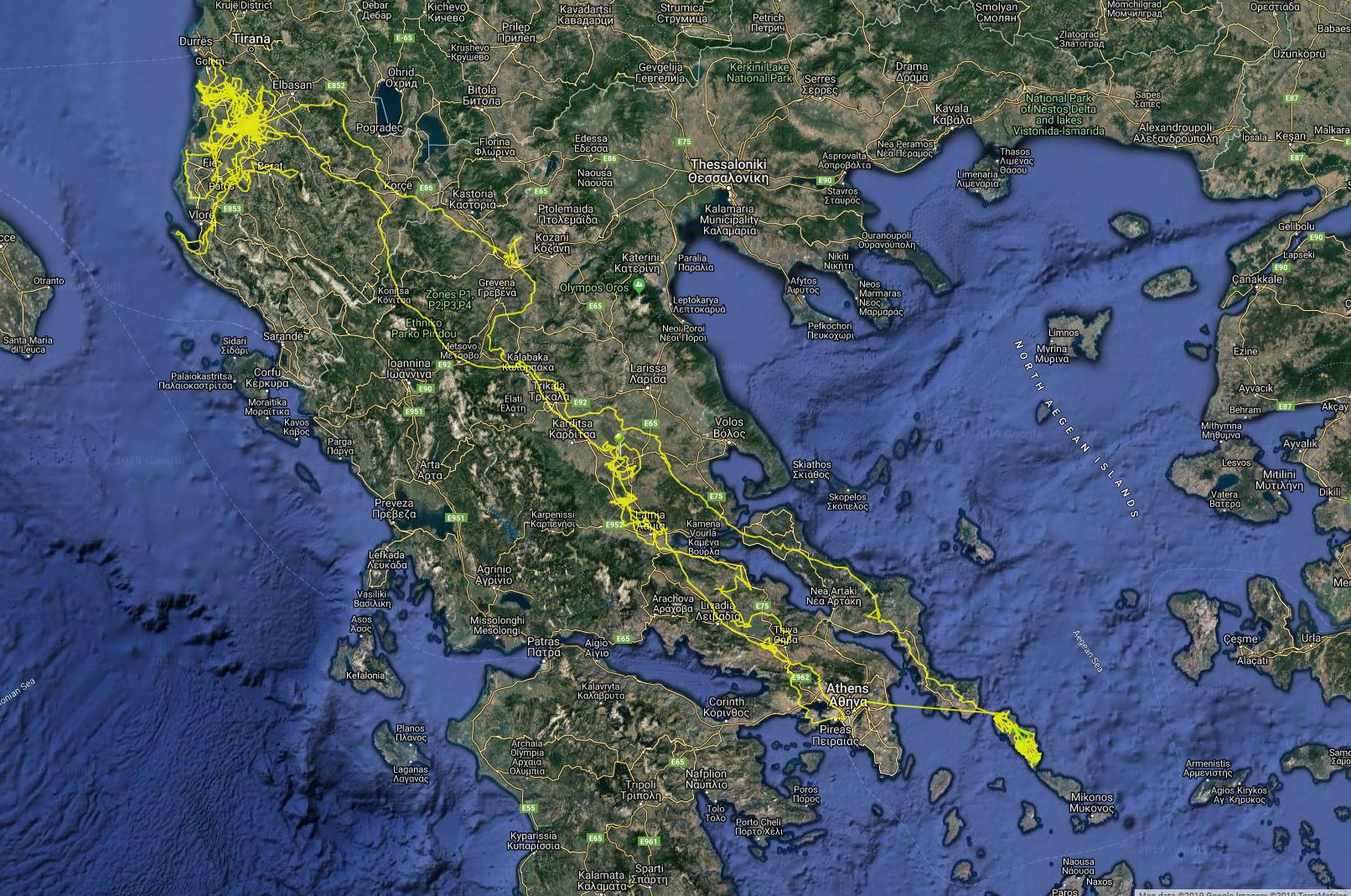Eagles fly free… but die on the power lines

The life of a young Bonelli’s Eagle came to a tragic end; another victim of electrocution in the Thessalian plain, Central Greece. Born in the Aegean Island of Andros, the endangered eagle, tagged with a transmitter under a European LIFE Project, was trying to get a rest on a power transmission tower.
The unlucky Eagle was born in spring 2019 and, during the few months of his life, he embarked on a long journey, searching for suitable foraging and shelter sites. He reached the Albanian shore, where he stayed for a month, and then he headed back south, soaring spectacularly over downtown Athens, before he settled in the plains of Central Greece, where he finally lost his life. The dead bird was transported to ANIMA Wildlife & Rehabilitation Centre for an autopsy and then to the University of Crete for toxicological screening.


Electrocution poses a major threat to Bonelli’s Eagle. Numerous studies, as well as the results of many relevant research projects in the Mediterranean, confirm that, in many regions, electrocution is the main threat, especially for immature birds, when they, after the breeding season, fly away from the nest and often visit areas with intense human presence.
The issue also seems crucial in Greece. Two immature Bonelli’s Eagles have already been found dead from electrocution (one in Tilos Island and one in the Thessalian plain) since the start of the LIFE Bonelli EastMed Project (2018). The death rate is obviously larger, since only a small percentage of the incidents is registered, due to the difficulties in spotting the dead birds’ location. Often, forest fires attributed to “unknown reasons” start near power lines from electrocuted birds.
Unfortunately, very little has been done by the relevant bodies in Greece on the subject of power line insulation. Especially the Thessalian plain, a large part of which is covered by Special Protection Areas (SPAs) for wild birds (Natura 2000 network), is an extremely dangerous electrocution trap for raptors: the large rural areas provide abundant prey for raptors, gathering there every winter in large numbers. However, due to the absence of large trees or high-standing rocks, the only positions available for them to perch are man-made structures, such as power transmission towers and pylons, making them extremely susceptible to electrocution.
Many other raptor species fall victim of electrocution every year, among them rare and endangered species as the Egyptian Vulture, the Greater Spotted Eagle, the Short-toed Snake Eagle, the Eagle-Owl, and the Osprey. Other large birds, as storks, crows and gulls, are frequently electrocuted.
Tagging young Bonelli’s Eagles with GPS transmitters under the LIFE Bonelli EastMed Project is expected to provide more information on the potential hazardous sites for the species –and, unhappily, will probably reveal more electrocution incidents.
In collaboration with HEDNO (Hellenic Electricity Distribution Network Operator), actions are to be undertaken for the electrocution risk reduction, as the insulation of transmission towers and the marking of the power lines. These actions are considered of crucial importance for this endangered species conservation and are one of the Program’s main objects. They are also expected to contribute significantly to the protection of many other species from electrocution.















